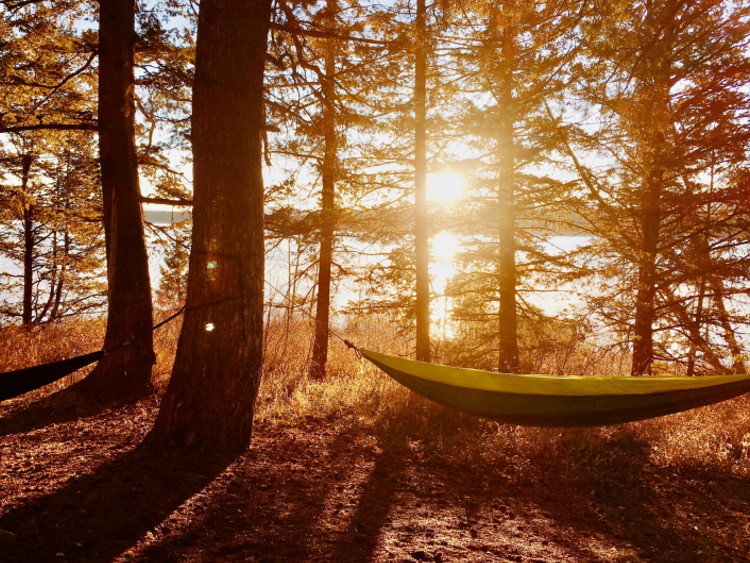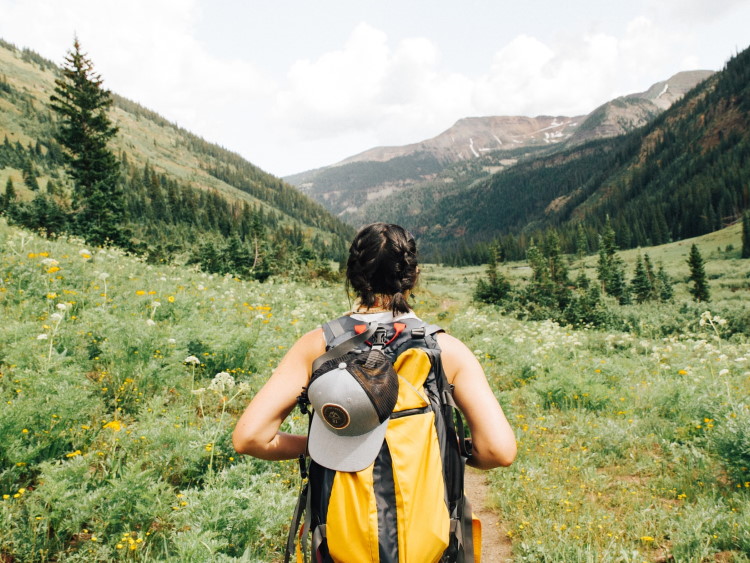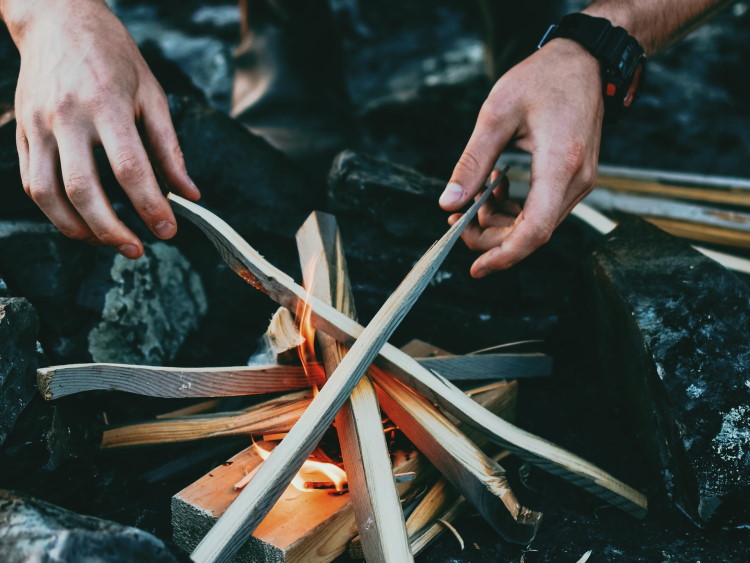To leave your own comfort zone and do something you’ve never done before isn’t just exciting but the perfect way to get out of the hum and drum of the daily routine. Just switch off, dive headfirst into nature and uncover new challenges. It doesn’t matter if you’re on holiday or closer to home, microadventures are never far away. We’ve got a few suggestions for ways you can break out of that bubble and do something out of the ordinary, maybe even leading to the adventure of a lifetime!
What is a microadventure?
Get out into nature for a few hours or a few days and do something you’ve never done before. That is a microadventure! Now obviously, for different people that is going to be different things. Almost anything can be a microadventure. And while this is hardly an “invention” in the typical sense, Alastair Humphreys coined the term “microadventure” in 2014 to give a name to the after-work thrills average folks had already been seeking out for years.
A night under the stars
A sleeping mat, a sleeping bag and an unobstructed view of the stars – in theory, that’s all you need for a microadventure that allows you to get away from it all for a short while, even in the middle of the week. Or do you prefer a hammock for a night under the open sky? Just stretch it between two sturdy trees, snuggle up and listen to the sounds of nature.

Can I just sleep outside anywhere?
Make sure to check local laws regarding spending the night outside. It might sound crazy, but this isn’t the 1400s anymore, in the 21st century, you can’t just set up camp when and where it pleases you. To avoid spending a night behind bars (although that could be a microadventure for most) stay informed! Check this article (try changing to your local language if necessary) for a quick overview. If you’re near Teufel’s headquarters in Berlin, for instance, “wild camping” is allowed in the surrounding state of Brandenburg, but not Berlin itself. Also, try using a local tracking app to help find the best path.
The right product from Teufel
[product id=”50365,51558,31035″]
Use your sense of direction: Hiking without a smartphone or GPS
We’re always following rules and fixed routes. Our eyes are constantly glued to our smartphones and we feel compelled to follow the directions of our navigation systems. It can be surprisingly refreshing to hike without a smartphone or other technical aids. Just give it a try: choose a hiking route or simply a specific destination and a rough direction. And then just start walking and orient yourself in a completely analogue way for a change.

How to find your way outdoors
Since this is easier said than done, here are a few tips on how and what you can use for orientation outdoors:
- A compass is, of course, the tool of choice for determining the points of the compass.
- Navigate using landmarks such as rivers, mountain peaks, bridges or forest edges.
- Make note of interesting things you pass on the way out so you can more easily find your way back such as prominent trees, old buildings or even anthills.
- The position of the sun is also an important indicator of the compass direction. However, consider what time of year you are traveling – or even where on the globe if you are going on a micro-adventure abroad.
Not every tip is worth following
There are many putative tips on how to find your way in the wild. Some, however, might lead you astray. For example:
- Supposedly, moss grows on the north side of trees – in fact, this varies greatly, especially in densely overgrown forests, because moss growth depends on many factors. On free-standing trees, moss growth is most likely to indicate the windward side: and in Germany that is usually west. But you should not rely on that alone.
- Just like moss on the north side, anthills are supposedly always on the south side of trees. In fact, the insects like it warm and choose a sunny spot. However, where it is particularly sunny can differ. Especially in densely overgrown forests, there is another sticking point: how do you decide which tree an anthill “belongs” to?
- When it doubt, pick one trajectory and stick to it. You should reach a road eventually in built-up countries like most parts of Europe. This advice is well reasoned, but not a guarantee of success. Everyone has a dominant leg, which makes it very easy to walk in circles over long distances. At least if you don’t consciously follow a straight line. In the forest, you can aim for trees in a row and walk along this imaginary line, which will keep you going straight, but otherwise it is an easy trap to fall into.
Making a campfire without a lighter and matches
First, a little warning. Before you start a campfire, find a place where you are allowed to do so and where it is safe. For example, in (your) garden in a firepit or in a sealed fireplace. It’s not allowed in the forest and especially in summer, you really shouldn’t be starting fires anywhere.
But if you have a good place to practice, we can get down to business. Block out some time, because lighting a fire without the spark-wheel on a lighter or a match can actually take a while. You have several options to get flames blazing. But the first step is to gather fuel.

The be-all and end-all: tinder and kindling
Besides larger pieces of wood for the fire, you need very dry, fast-burning material to start with. That typically involves both tinder and kindling. Tinder is a material such as dry grass, paper, wood shavings, or dried moss that can ignite with just a couple sparks. That then should be used to light slightly larger but also dry material like twigs and branches, known as kindling. From there, if you’re very careful, you should be able to get larger pieces of wood to catch, and it’s off to the races.
There’s many ways to start a fire
Once you have the fuel, you need the spark – or simply a lot of heat. You can start your fire in the following ways:
- A magnifying glass or plastic bottle with water to focus sunlight. Aim the beam at a single spot in the dry tinder for a long time.
- Strike a flint or fire steel to make sparks fly.
- The MacGyver method: Use a battery and chewing gum paper to start a fire. Place the metal-coated side of the paper on the positive and negative pole – beforehand, cut the paper into a narrow strip or crumple it up a bit. Shortly afterwards, a short circuit will cause the paper to ignite at a narrow point.
- For survival professionals, the only way to light a fire in a professional manner is to use a fire drill and a lot of friction. This method is the most time-consuming – but is also the most reliable for producing a proper, roaring flame. To help you succeed, here is a video with clear instructions.
If you watch this video, you should be able to get a fire going in almost any situation.
Find the right track for your adventure – outdoor speakers from Teufel

- MOTIV GOOpens in new tab: This portable Bluetooth speaker can also accompany you when you spend the night under the stars, thanks to its IPX5 protection rating.
- ROCKSTER CROSSOpens in new tab: Robust, practical, loud – the ROCKSTER CROSS is made for outdoor adventures. Whether it’s a big expedition or a micro adventure, the powerful stereo system with two tweeters, a subwoofer and two passive drivers ensures the right atmosphere at any location.
- Find more outdoor loudspeakersOpens in new tab in our online store.
Other audio companions for your outdoor adventure
[product id=”38128,32058,27517″]
- Bild 1: ©makenzie cooper. Quelle: UnsplashOpens in new tab
- Bild 2: ©Holly Mandarich. Quelle: UnsplashOpens in new tab
- Bild 3: ©Ian Keefe. Quelle: UnsplashOpens in new tab




